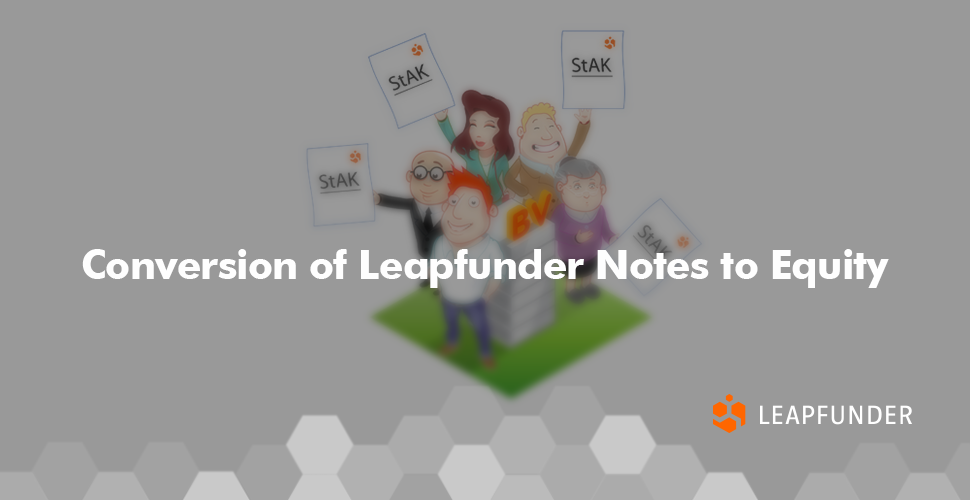Convertible notes have become a standard when investing in an early stage startup. The Convertible has a number of benefits that we’ve mentioned in our recent blog post: 4 Benefits of Raising Funding via Convertible Notes. In this blog post we’ll explain when Leapfunder Notes turn to equity.

Leapfunder Notes turning into Equity
Before a startup can raise a larger funding round, they need to have business results that will justify the investment. It’s often quite tough to get to that point, and it’s where many startups can fail. Once the startup succeeds and a large investor decides to invest, the convertible notes will be repaid with shares. The value of the shares will be determined by the price offered by the incoming larger investor.
In summary, the most standard Leapfunder Notes are converted into shares as soon as:
- A later investor decides to invest > E100k in newly issued shares in the startup.
- The startup gets taken over.
- The Leapfunder Note reaches its Final Conversion Date: the note is converted into shares at a price agreed with noteholders and/or approved by an external expert.
Large investors like the Leapfunder Note because it makes it easier to handle smaller Pre-Seed and Seed stage investors:
“Our seed round investor was not familiar with Leapfunder, however once this was explained and they were familiarized, not many questions were asked. It was perceived as any other convertible. We had 8 investors participate in our Leapfunder round and if all these would’ve been dealt with directly – not through Leapfunder – we would probably have more questions and operational complications aligning and signing the participation agreement with the investor.”
Jošt Faganel, ULU’s co-founder & CEO.
When the conversion happens the early investors – who supported the startup via Leapfunder Notes in the idea phase – are rewarded for getting in early: they get the shares at a discount. This discount is their reward for the risk they have taken over time. In addition, the value of their notes has increased with the interest. This interest will also be repaid in shares. Upon conversion all investors are bundled in a standard investor pooling structure which keeps the cap table clean.
In theory, it is possible that the startup never attracts a larger follow-on investment. In this case the Leapfunder Notes will be converted as soon as the startup gets taken over. However, there is a final deadline: the convertible notes will only live until their final conversion date. This date is set at the outset. At this date the conversion will be triggered automatically. The Leapfunder Note is converted into shares at a price that is agreed with note holders or one that is approved by an external expert.
Sometimes a Cap has also been agreed in advance. A Cap is a maximum share price that will be used for conversion. The Cap guarantees a maximum valuation upon conversion, which also implies a minimum % of the shares before dilution.
“There is both downside and upside protection – if the startup doesn’t perform as expected, the percentage of shares allocated to convertible investors at conversion is higher, but if the startup wildly exceeds expectations and the valuation skyrockets, the cap ensures that note holders won’t end up with a fraction of a percent of the company.”
John Staunton, CEO of CashOrCard POS
If you have any questions about Leapfunder Notes and their conversion to equity, please don’t hesitate to get in touch, we’ll be more than happy to answer all of them!
Discover promising startups and learn more about Leapfunder:


